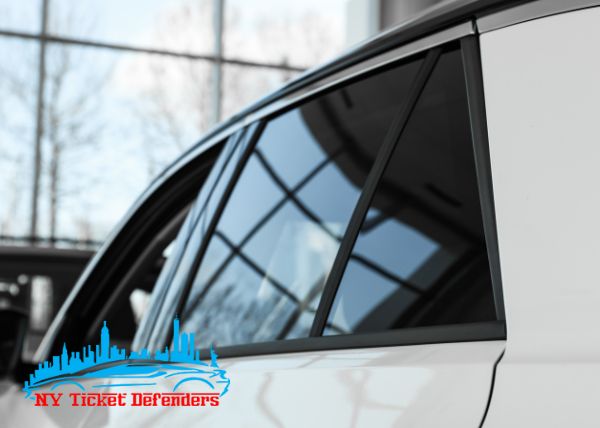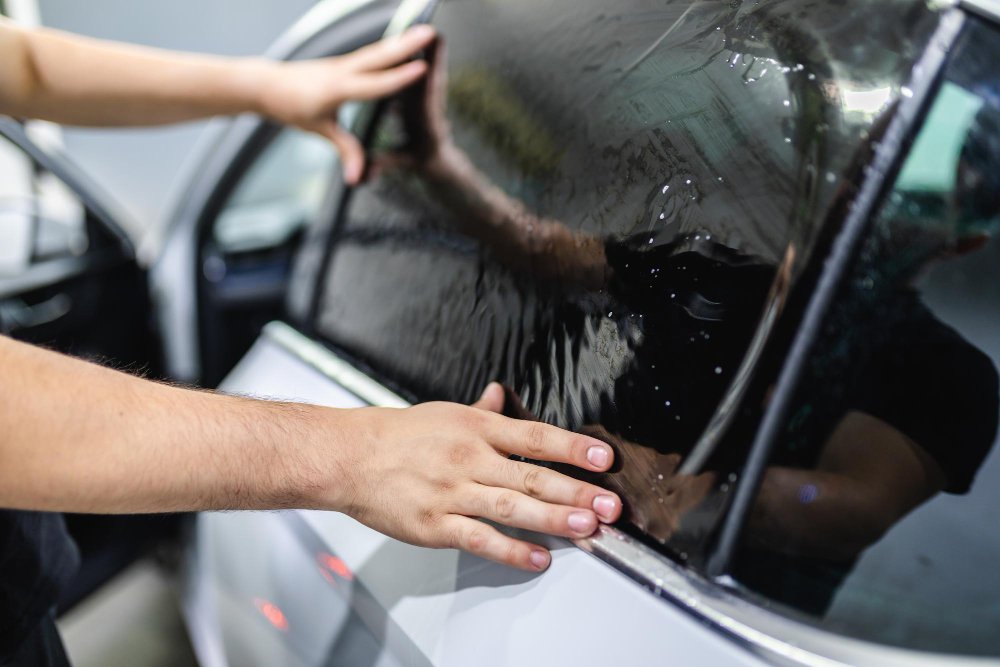Auto Window Tinting: Enhance Your Vehicle's Design and Privacy
Wiki Article
Window Tinting Laws and Guidelines: What You Need to Know Before Tinting Your Automobile
Before proceeding with home window tinting for your lorry, it is vital to familiarize on your own with the varied regulations and guidelines that control this method throughout different states. These guidelines determine the acceptable degrees of color darkness, commonly determined by noticeable light transmission (VLT) percentages, and consist of details specifications for front windscreens aimed at ensuring road safety and security.Summary of Window Tinting Rules
Window tinting regulations are often subject to variant across different territories, showing neighborhood guidelines and safety and security considerations. These laws determine the permissible levels of tint darkness and reflectiveness on lorry home windows, making certain that drivers keep ample presence while also protecting versus damaging UV rays and heat.Many guidelines classify window tinting based on the Visible Light Transmission (VLT) percent, which indicates the quantity of light that can pass through the home window. Usually, lower VLT percents indicate darker tints. Legislations usually differentiate in between the front, side, and rear home windows, with stricter limitations put on the front windshield to boost safety for both the motorist and other road individuals.
Furthermore, some territories enforce limitations on the reflectivity of the color, avoiding excessive glare that can harm presence. Exceptions to these regulations might exist for individuals with particular medical problems needing added sunlight security. Conformity with window tinting regulations is vital, as infractions can cause penalties, mandatory elimination of the color, and potential rises in insurance costs. Therefore, it is necessary for vehicle proprietors to familiarize themselves with local regulations prior to proceeding with window tinting installments.
State-by-State Color Regulations
Recognizing the particular window tinting regulations in each state is essential for automobile owners seeking to abide by the regulation. Each state in the U.S. has established its very own set of policies controling home window tinting, which can differ dramatically. These policies typically determine the allowable levels of tint darkness, the kinds of home windows that can be tinted, and any type of medical exemptions that might use.For example, states like The golden state have strict constraints on tint darkness for front home windows, while others, such as New Mexico, might permit darker colors. Furthermore, certain states mandate specific visibility portions for various windows, consisting of the windscreen, front side windows, and back windows. It is essential for cars and truck proprietors to familiarize themselves with their state's laws to prevent possible fines or charges.
Additionally, some states may call for an accreditation sticker to be put on tinted windows, showing compliance with state laws. Failing to stick to these laws not just takes the chance of legal effects but can also affect safety and security and visibility while driving. Therefore, automobile owners need to perform detailed research or consult local authorities to make certain full understanding and conformity with state-by-state tint guidelines.
Allowed Tint Levels and Types
Numerous automobile owners may be surprised to discover that allowed color levels and types differ widely across various states. Each state has actually developed its very own laws regarding the permissible darkness and reflectivity of window color, typically measured by Visible Light Transmission (VLT) percentages. VLT describes the amount of light that can travel through the tinted home windows; therefore, a lower portion suggests a darker tint.
Additionally, the kinds of color products permitted can differ, with some states banning metallic or mirror-like surfaces. It is crucial for car proprietors to familiarize themselves with their state's particular legislations to guarantee compliance. Non-compliance can lead to fines, mandatory removal of the tint, or various other lawful repercussions, making it necessary to understand these guidelines before waging installment.
Medical Exceptions for Tinting
While not all states give allocations for medical exceptions pertaining to window tinting, those that do recognize the need for details individuals to enhance visibility and convenience due to clinical problems. Various clinical conditions, such as lupus, skin cancer cells, view publisher site and specific eye disorders, can render people specifically sensitive to sunlight. Subsequently, these people may call for darker tints to safeguard themselves from dangerous UV rays and glow.
It is very important to keep in mind that despite a clinical exemption, there may still be restrictions on the degree of color enabled. Compliance with state laws makes sure that people are both secured and within lawful restrictions. Those taking into consideration clinical exemptions must call their local Division of Electric motor Automobiles or comparable authority to comprehend the procedures and requirements required to apply for an exception efficiently.
Fines for Non-Compliance
Stopping working to follow window tinting legislations can result in substantial charges, which differ by state. Legislation enforcement firms are equipped to issue citations for automobiles that do not comply with the defined tinting laws. These charges typically consist of fines, which can vary from small total up to numerous hundred dollars, relying on the extent of the violation and the state in question.In some territories, repeated offenses may result in escalating fines or extra penalties, such as necessary court looks. Furthermore, non-compliance might necessitate the elimination of prohibited tinting, often at the owner's cost. In extreme situations, habitual offenders might encounter Click Here suspension of their car enrollment until compliance is achieved.
Additionally, insurance effects may arise from receiving several citations for window color infractions. Insurance providers might watch such offenses as an indicator of riskier habits, possibly causing boosted costs or problem in insurance coverage.
To avoid these charges, it is important for lorry owners to acquaint themselves with their regional window tinting regulations and guarantee that their lorry complies (Window Tinting). This proactive strategy not just prevents legal ramifications however additionally promotes road safety and security
Conclusion

A lot of guidelines identify window tinting based on the Visible Light Transmission (VLT) portion, which suggests the amount of light that can pass with the window. Compliance with window tinting policies is vital, as offenses can result in fines, compulsory elimination of the color, and prospective increases in insurance premiums.Understanding the certain home window tinting regulations in each state is essential for automobile proprietors looking for to abide with the legislation. These guidelines often determine the permitted degrees of tint darkness, the types of windows that can be tinted, and any medical exceptions that might apply.
For circumstances, states like The golden state have strict restrictions on color darkness for front home windows, while others, such as New Mexico, might enable darker colors.
Report this wiki page